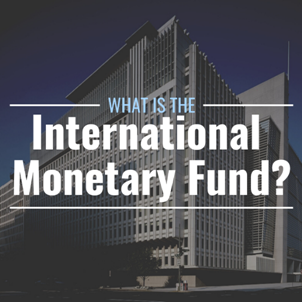Description

Disclaimer: Copyright infringement not intended.
Context
- The International Monetary Fund (IMF) cut its forecast for India’s economic growth to 6.8 per cent in 2022 — sharply down from its earlier projection of 7.4 per cent in July.
History of IMF
- The IMF, also known as the Fund, was conceived at a UN conference in Bretton Woods, New Hampshire, United States, in July 1944.
- Countries were not eligible for membership in the International Bank for Reconstruction and Development (IBRD) unless they were members of the IMF.
- IMF, as per Bretton Woods agreement to encourage international financial cooperation, introduced a system of convertible currencies at fixed exchange rates, and replaced gold with the U.S. dollar (gold at $35 per ounce) for official reserve.
Role of IMF
- IMF focuses on fostering global monetary cooperation, securing financial stability, facilitating and promoting international trade, employment, and economic growth around the world.
- The IMF is a specialized agency of the United Nations.
Functions of IMF
- Regulatory functions: IMF functions as a regulatory body and as per the rules of the Articles of Agreement, it also focuses on administering a code of conduct for exchange rate policies and restrictions on payments for current account transactions.
- Financial functions: IMF provides financial support and resources to the member countries to meet short term and medium term Balance of Payments (BOP) disequilibrium.
- Consultative functions:IMF is a center for international cooperation for the member countries. It also acts as a source of counsel and technical assistance.

IMF Quota
- IMF funds come from two major sources – Quota and Loans.
- Quotas which are pooled funds of member nations, generate most IMF funds.
- The size of a member’s quota depends on its economic and financial importance in the world.
- Nations with larger economic importance have larger quotas.
- The quotas are increased periodically as a means of boosting the IMF resources in the form of Special Drawing Rights.
Organization structure of IMF
|
Structure of the International Monetary Fund (IMF)
|
|
Governing Bodies of IMF
|
Roles and Responsibilities
|
|
Board of Governors
|
· Each governor of the Board of Governors is appointed by his/her respective member country.
· Elects or appoints executive directors to the Executive Board.
· Board of Governors is advised by the International Monetary and Financial Committee (IMFC) and the Development Committee.
· An annual meet up between the Board of Governors and the World Bank Group is conducted during the IMF–World Bank Annual Meetings to discuss the work of their respective institutions.
|
|
Ministerial Committees
1. International Monetary and Financial Committee (IMFC)
2. Development Committee
|
· It manages the international monetary and financial system.
· Amendment of the Articles of Agreement.
· To solve the issues in the developing countries that are related to economic development.
|
|
Executive Board
|
· It is a 24-member board that discusses all the aspects of the Funds.
· The Board normally makes decisions based on consensus, but sometimes formal votes are taken.
|
Reports Published
- Global Financial Stability Report
- World Economic Outlook: it is usually published twice a year in the months of April and October.
- Fiscal Monitor (FM)
https://www.thehindu.com/business/Economy/inflation-accelerates-to-741-in-september-2022-highest-since-april/article66001257.ece













